Conversations regarding creative effectiveness typically leads to a very consumer focused perspective, yet some of the world’s largest brands and advertisers are not selling to the everyday consumers. Businesses that support other businesses are some of the biggest drivers and disruptors of technological innovation, adoption, and financial stability and yet these companies are not immune to facing their own set of challenges. From long sales cycles, to increased competition, and self-service buying journeys, B2B advertising is simultaneously a marketer’s best friend and worst enemy. It’s more important than ever to connect with customers on a deeper level, by building a meaningful connection.
Spending marketing dollars like B2C players
What does the current landscape of B2B advertising look like? Highly rational ads and feature focused imagery may come to mind – but that’s not actually the case. Yes, historically, B2B marketing has been presented as rational, serious, and even unemotional. In other words, business has been all business. But businesspeople are people too and it’s time for people to see B2B for everything it can be — creative, bold, imaginative, and memorable. B2B brands power much of the world’s economy, and creativity is an economic multiplier.
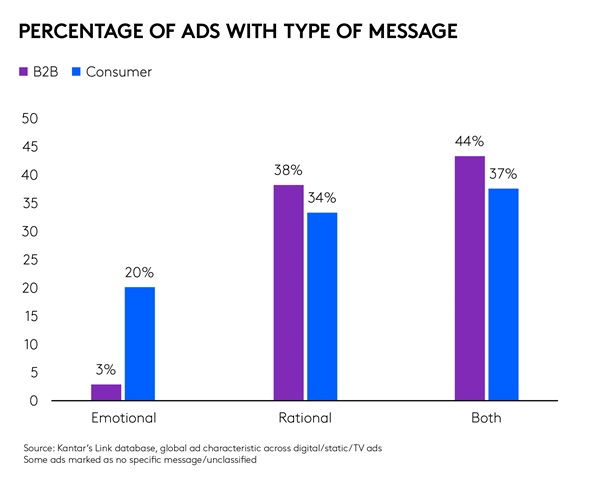
Even though they have just as rational of a tone as consumer-focused advertising, B2B ads tend to generate a more rational response from viewers. We see that persuasion and message relevance tend to be stronger in B2B ads compared to consumer geared ads. Yet, they invoke less of an intuitive response when it comes to attention and engagement. When the audience is less engaged in the creative, the connection to the brand being advertised tends to be weaker, particularly in TV ads. This means that these ads can motivate B2B decision makers to take short term action, but don’t push the needle when it comes to building brand equity.
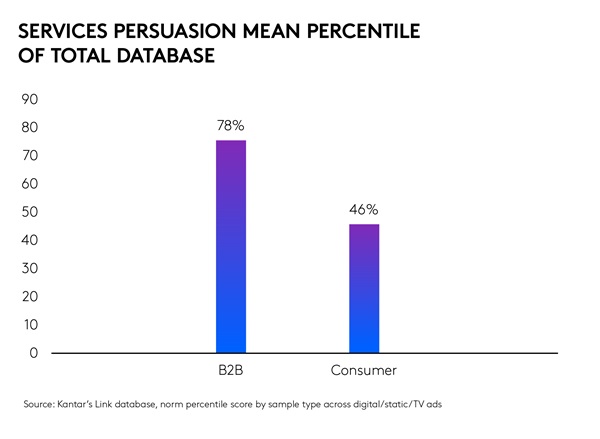

These ads tend to perpetuate the view of the corporate world that most people hold, with a large percentage including characters that are perceived as authoritative, both male and female, and tend to include characters that fall within an older age band (40-64). Thus, they are also not seen as particularly distinct, as they play it safe.
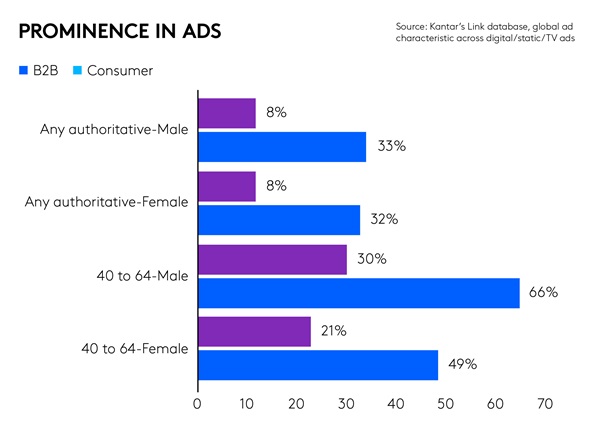
Is it still relevant for B2B to advertise in mass channels?
When trying to reach key decision-making audiences, it can feel like mass media channels may not provide the most efficient approach. However, it is worth the investment to try to get the creative right in these channels to create longer term brand building effects.
Across all B2B ads, we see a bigger impact on metrics like perceived leadership, superiority, and credibility across the board – potentially due to presence within the channel itself.
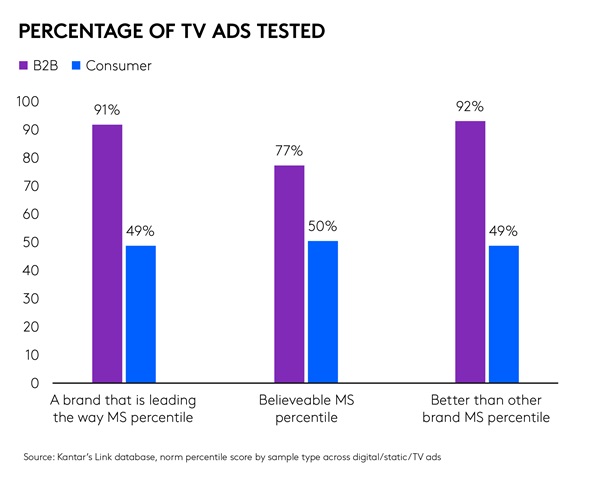
A recent WARC paper also highlights the results of a long-term study of B2B marketing campaigns and found that high spend and broad channel help drive longer term brand building impact. As businesses seek to balance short- and long-term impact, with strategies seeing a surge in popularity like ABM (Account Based Marketing), the role of mass media should not be forgotten or deprioritized.
Selling excitement, not cameras
There is an opportunity to leverage the mass communication space more effectively for business-to-business marketing. It is important that all marketers recognize the profound impact of emotion and trust in establishing lasting connections, but this opportunity is particularly apparent with B2B audiences. In this dynamic and competitive environment, the successful B2B advertiser understands that appealing to the emotional and trust-driven aspects of decision-making is not only relevant but crucial for building enduring relationships and fostering brand loyalty.
From our LINK database, we can see the impact of integrating emotion in advertising versus focusing on rational facts alone.
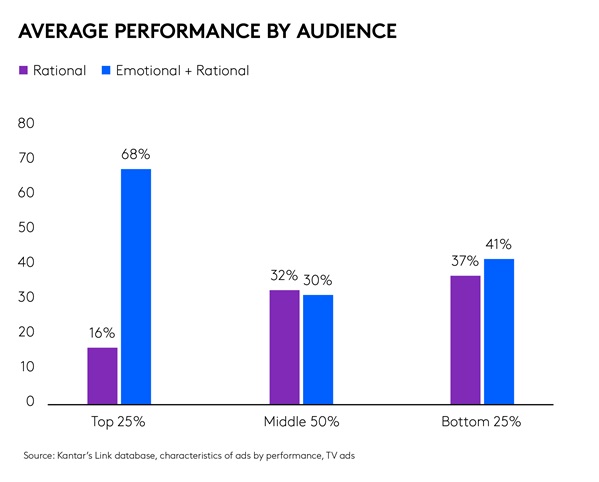
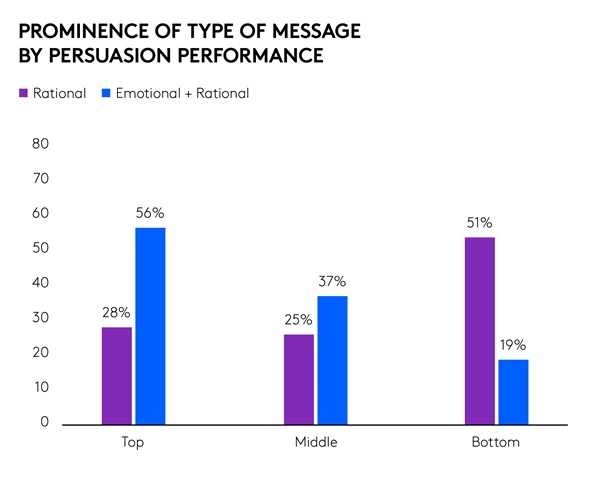
There is opportunity to do start with tonality and representation to build a connection. While being more authoritative is the norm, top performing ads are more likely to feature diverse characters that convey confidence or a sense of aspiration. Going a step further, ads that break stereotypes by not showing typical office environments with people working are more likely to have impact.
2023 Effie Finalist, Cigna’s ‘Your New Growth Plan’ is a strong example of these dimensions coming together. It appeals to the rational – by linking the benefit of healthy employees to a healthy company. But it also creates an emotional appeal by leaning into topical issues of mental health and employment challenges and making its focus on a core priority area for companies – its people. It creates encouragement and inspiration rather than intimidate or fear, and highlights a wide variety of businesses, people and problems.
What next?
B2B transactions may involve complex negotiations, intricate processes, and technical specifications, but at the core, they are driven by people. Understanding the human element within the B2B landscape is the first step in incorporating emotion into advertising strategies. Identifying the challenges, aspirations, and motivations of the decision-makers allows advertisers to tailor their messages in a way that resonates on a personal level.
Building emotion and trust in B2B advertising is not a one-time endeavor; it's a commitment to cultivating long-term relationships and a strategic imperative. In an era where authenticity and genuine connections are valued more than ever, embracing emotion and trust in B2B advertising is not just a choice – it's a competitive advantage that sets the stage for enduring success.

